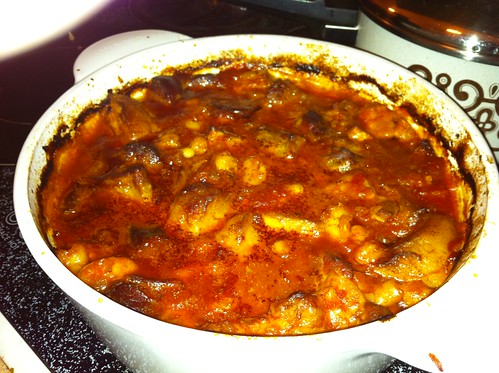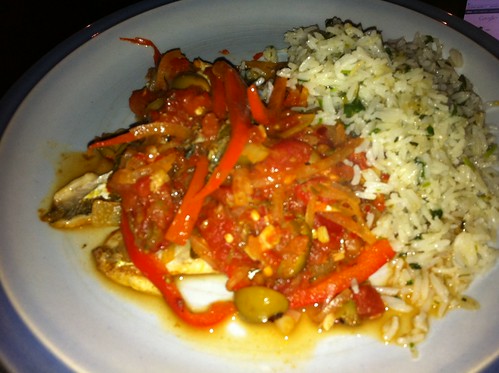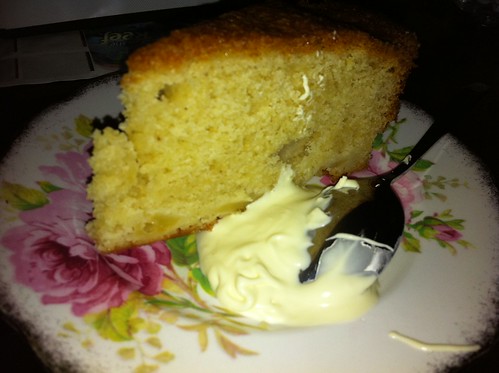
Let’s face it – that just sounds unbelievably good, no? I’d only just spotted this recipe on BBC’s Good Food site when one of my UK based friends mentioned having had a similar sounding dish at Chez Bruce. Not being a position to nip over to London to try it out for myself, I suspect the dish my friend had was the “thinly sliced pork with warm summer bean salad, salsa verde, chorizo and crackling” – so a summery version of the following very wintery dish.
Although there’s a bit of shopping to be done and some long slow cooking, this is really very easy. You just can’t be in a hurry. I also recommend that you ask your butcher to remove the skin from the pork belly but to score it and hand it over. We left the skin in the fridge to dry out and then rubbed it with olive oil and plenty of salt before crisping it up in a hot oven. Absolute bliss – and perfect crackling because of the drying out time!
Preheat oven to 140°C fan.
You need a 750g piece of boneless (and skinless!) pork belly, cut into large cubes. Heat some olive oil in a large casserole (you need something both stove and oven proof) and brown the pork belly in batches, setting aside on a plate or in a bowl as you go.
Once the pork belly is all browned, fry off 3 rashers of bacon, roughly chopped. If you can get hold of pancetta easily, use that. Reduce the heat and add a chopped onion and chopped garlic to taste (let’s say 2 large cloves). Cook until the onion starts to soften and then add two roughly chopped chorizos and stir through a teaspoon of paprika (I used sweet because that’s what I had, use hot if that is to hand).
When the chorizos start to give off a bit of fat, return the pork (and any juices that have collected) to the pan and stir through one tin of crushed tomatoes and 150mL of red wine. If you need to add a little water to ensure the pork is covered, do so.
Cover the pan and cook in the oven for about 2 hours. You needn’t be too fussy about the timing here – the important thing is that it’s a long slow cook. Over two hours is absolutely fine.
About half an hour before serving, remove from the oven, stir through a tin of cannellini beans (rinse the beans first) and return to the oven uncovered for about half an hour. This will not only heat up the beans but it will also help thicken the sauce. For this reason you don’t want to go too mad adding water for the final cook … something like this needs a thick, rich gravy.
We served with mashed potato and a few steamed vegetables.
This was a big hit – if it hadn’t all been eaten for snacks and lunches the remainder would have been frozen for an emergency dinner. If you use the quantities above you’ll have enough for 6 for an easy dinner – or plenty of leftovers!
To drink: you need something reasonably big to stand up to all the rich flavours. I think a Zinfandel (or Primitivo) would work well. Or a softer style Shiraz. You want some gentle acidity but not too many tannins.


